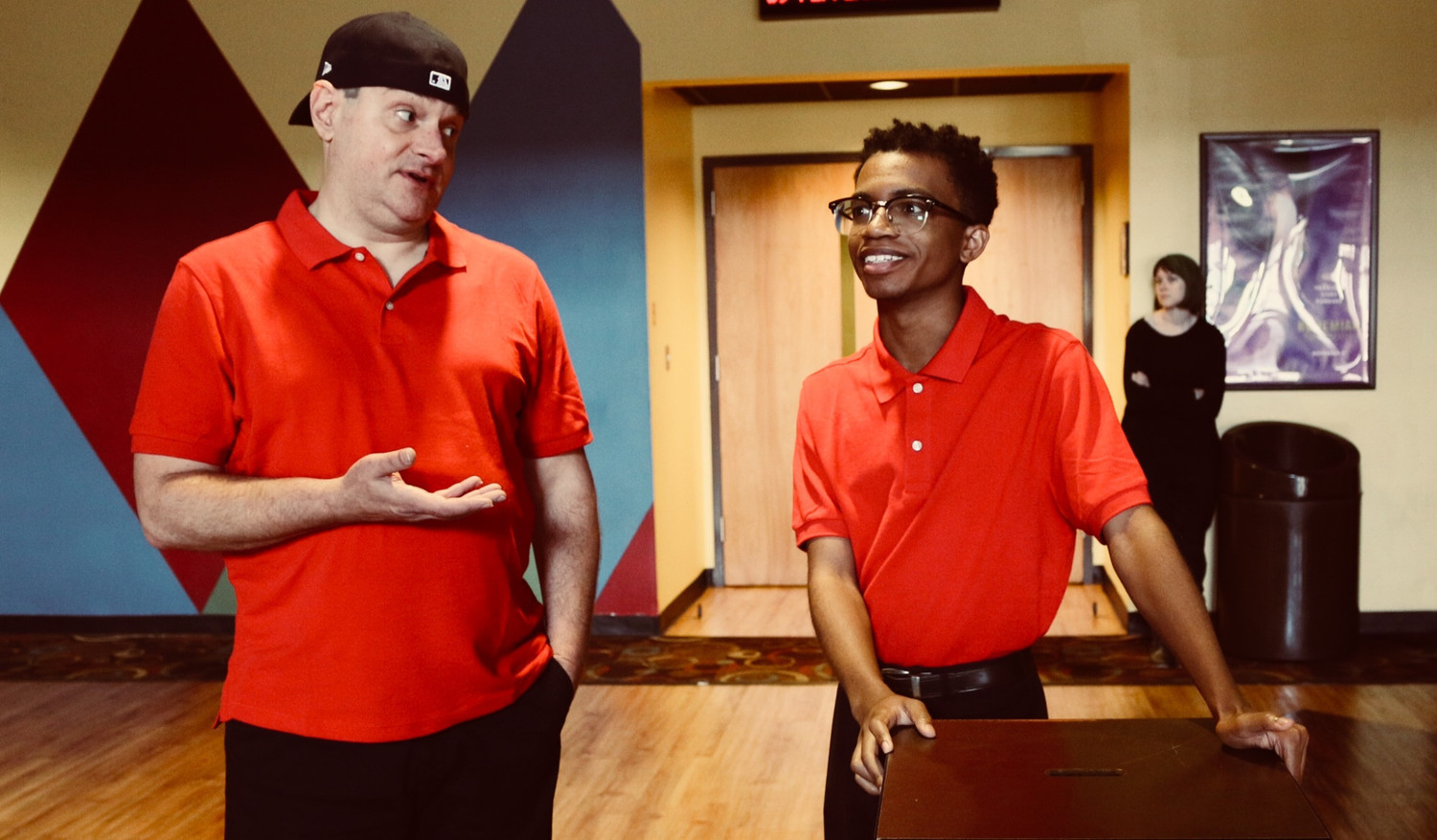Review: The Barlett Theater's Site-Specific Production of THE FLICK Capitalizes on Every Multileveled Morsel of Annie Baker's Pulitzer Prize-Winning Play

"People always freak out when like, you know, when like art forms move forward." - Annie Baker, THE FLICK
At the core of Annie Baker's Pulitzer Prize-winning play, THE FLICK is the juxtaposition between celluloid and digital film projections, art and commercialism, reality and make-believe. But it's more than that. It's a character study of the everyman navigating familial workplace relationships and discerning what is real and what's fake.
In the case of the Barlett Theater's production, which opened last weekend, what makes Baker's play about a single-screen theater even more credible, is the fact that it's being presented in a movie theater. Here the audience is positioned with their backs to the screen, facing the multi-leveled, cushy brown seats, where the crux of the action takes place. And it works.
The story centers around three employees working at The Flick, which has the distinction of being one of the last movie theaters in the state of Massachusetts to use a 35-millimeter film projector. When the play opens, Averi, a nervous, young, film aficionado, is learning the not-so-glamorous ins and outs of running a movie theater from Sam, who has been working at The Flick longer than anybody else. He is also schooled by Rose, the projectionist. Jim Roof's portrayal of Sam is the most absorbing and riveting of the trio, a testament to his experience. Vincent Bland Jr.'s intense portrayal of Avery is profound at times, particularly towards the latter half of the second act, though he might be better served by trusting his instincts and not overthinking and overanalyzing his character so much. And Chloe Oliver's portrayal of the eccentric Rose is spontaneous and unrestrained.
The most noteworthy thing about this play, however, is the undeniable rhythm of the piece, with its long and lingering silences, pauses, and nuances, most of which are dictated by the playwright, and in this case, are masterfully executed by director Jonathan Bohun Brady. And Brady capitalizes on every multilayered morsel.
For example, within the hush of Baker's script, he finds a strange musicality, a cacophony of commonplace sounds from the clap of a dust-pan to the squeak of a mop bucket, that spotlights the ordinary and authenticates the work. And within the space itself, he paints certain site-specific visuals that are unparalleled, some of which feel more like a modern dance in their pacing and style than a traditional play. And for me, watching the actors mime a scene from behind the small rectangular window of the projection booth felt intrinsically cinematic.
And that's what this play is. It's an homage to the sanctuaries of single-screen movie houses showing celluloid films that have succumbed to commercial, multiplex monoliths. It's also a celebration of the ordinary, which on the surface might seem mundane or boring, but isn't. And finally, it's an acknowledgment that good theater, site-specific or otherwise, is a form of art, which this production certainly is.
THE FLICK runs November 11th at the Northgate Stadium 10 Cinema in Durham. For more information visit: www.http://bartletttheater.org/.
Reader Reviews
Videos

